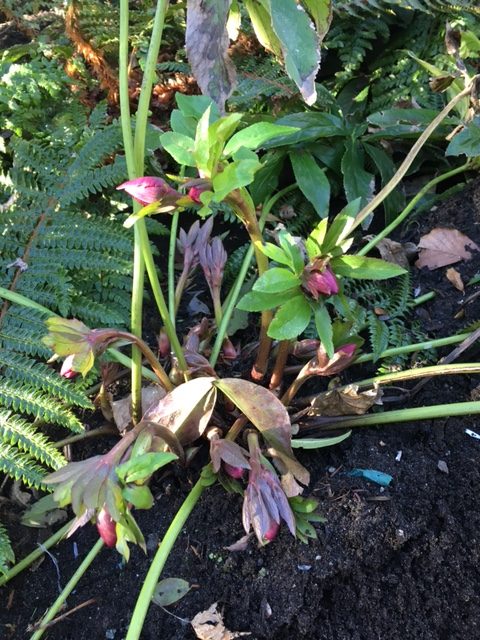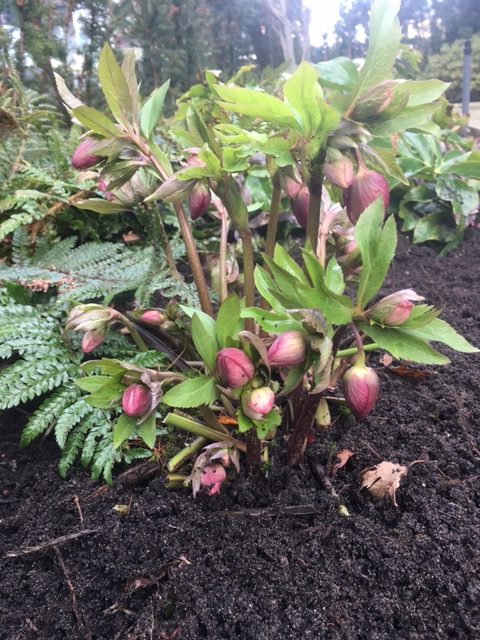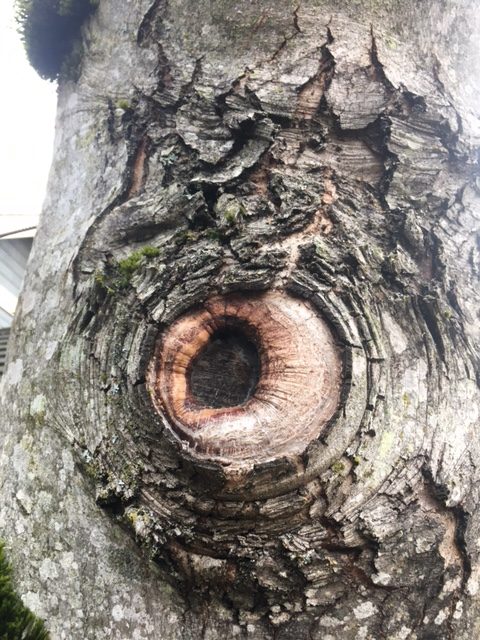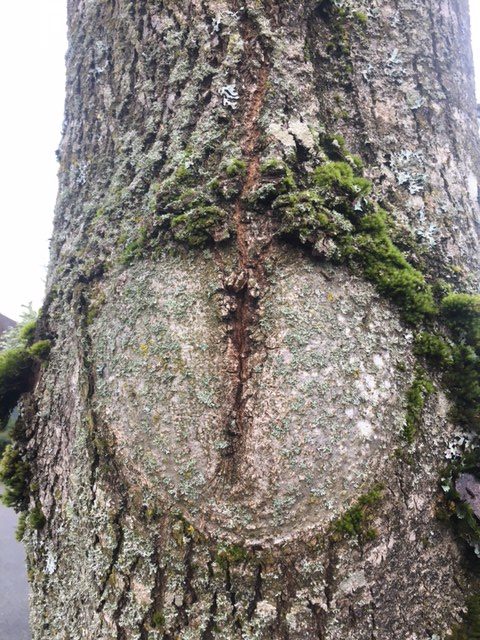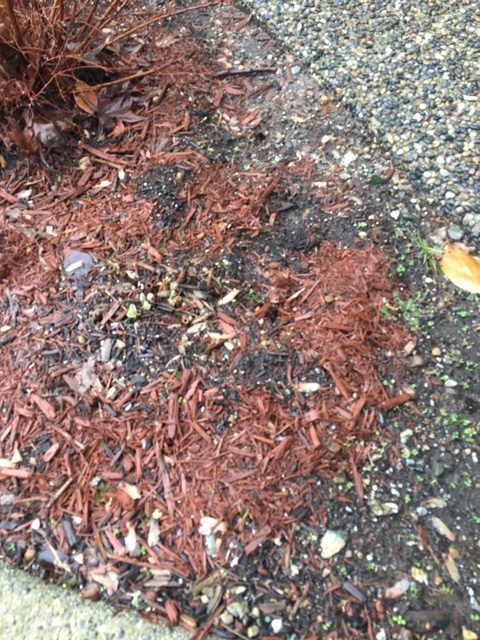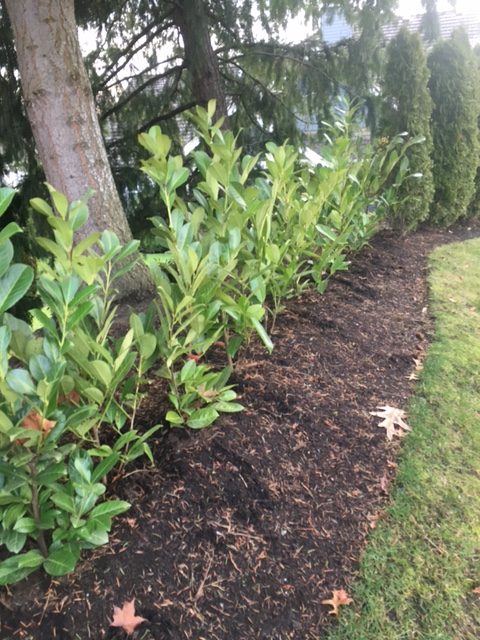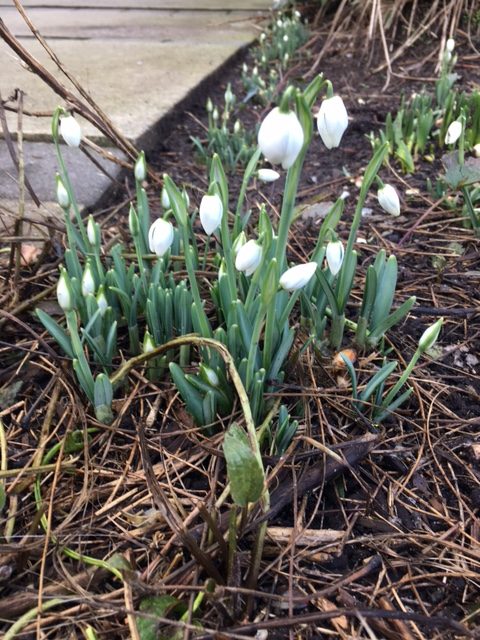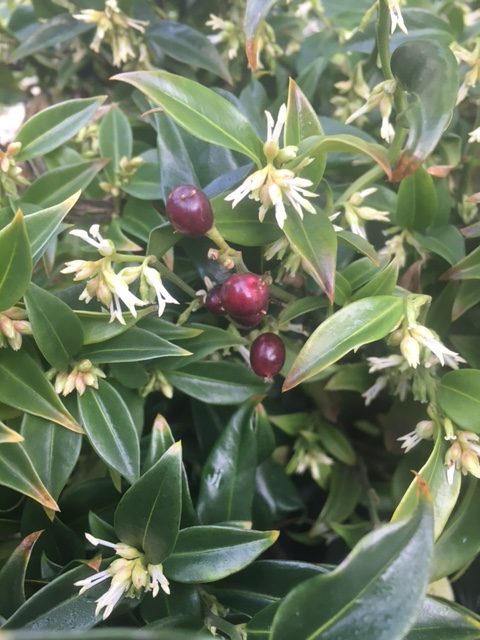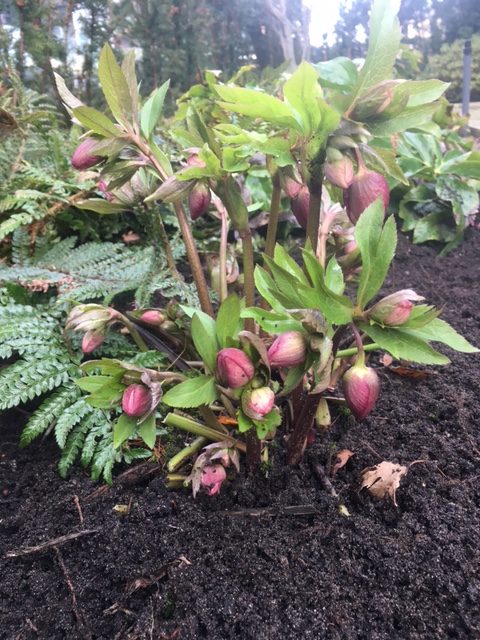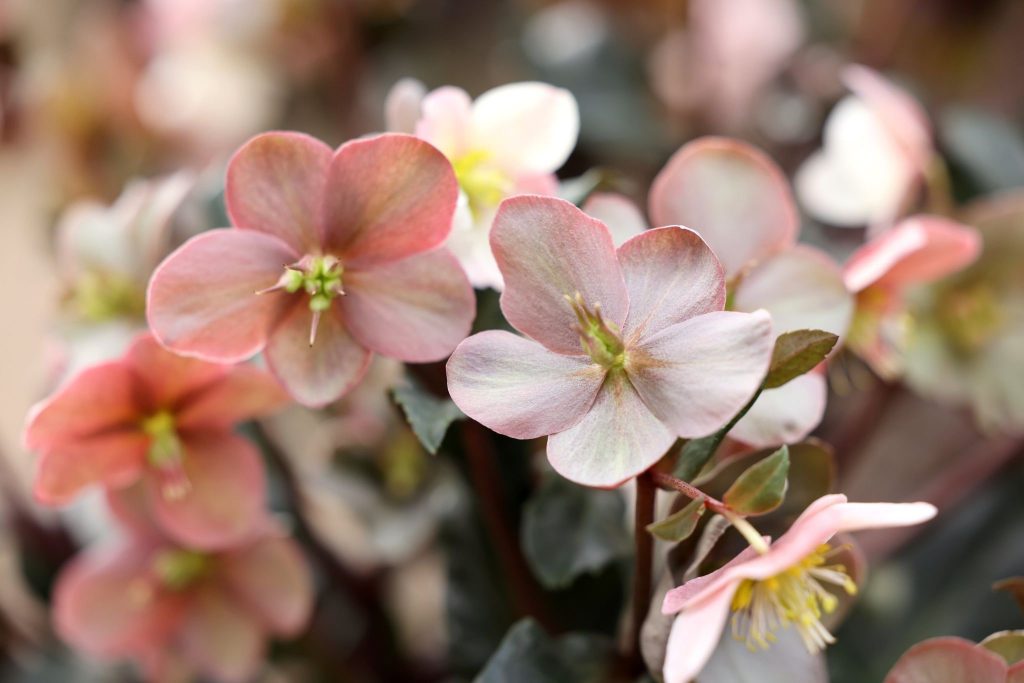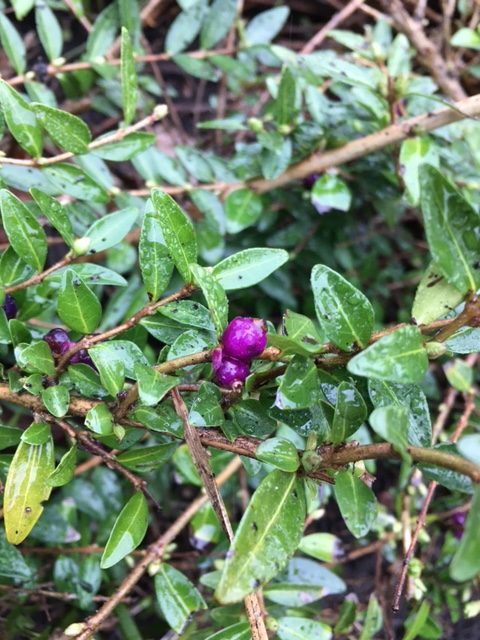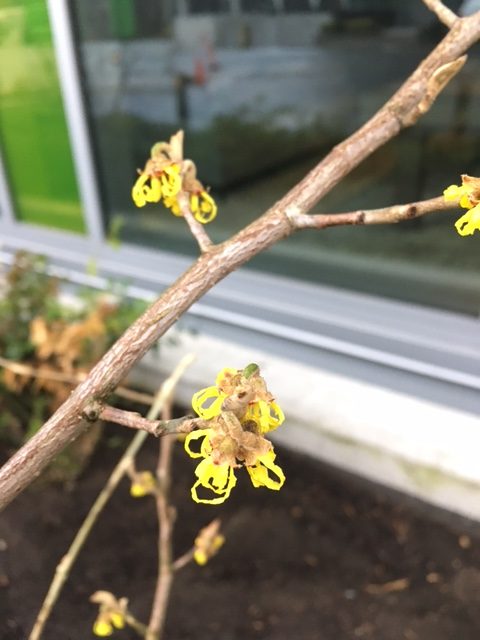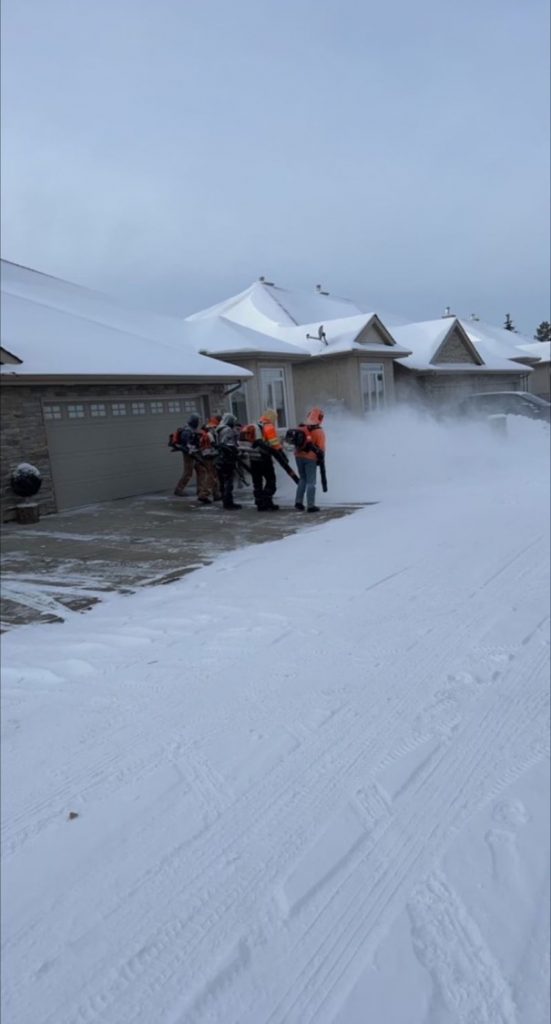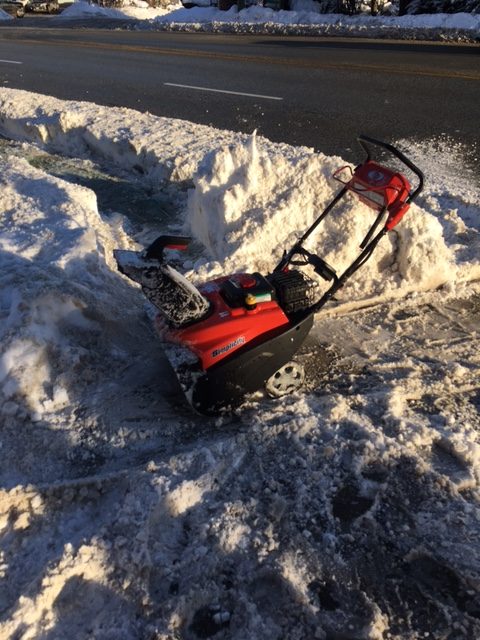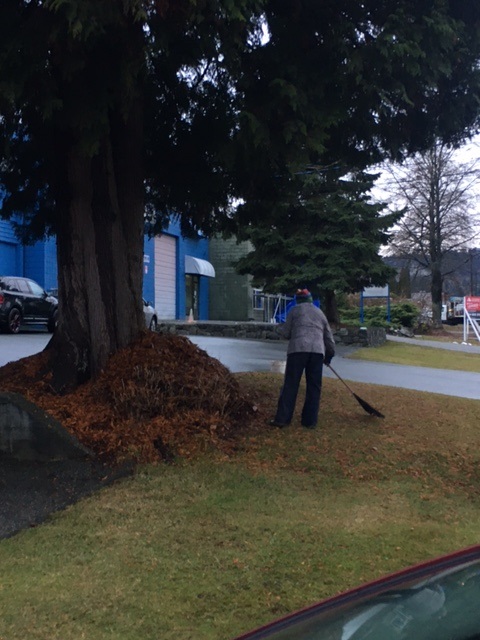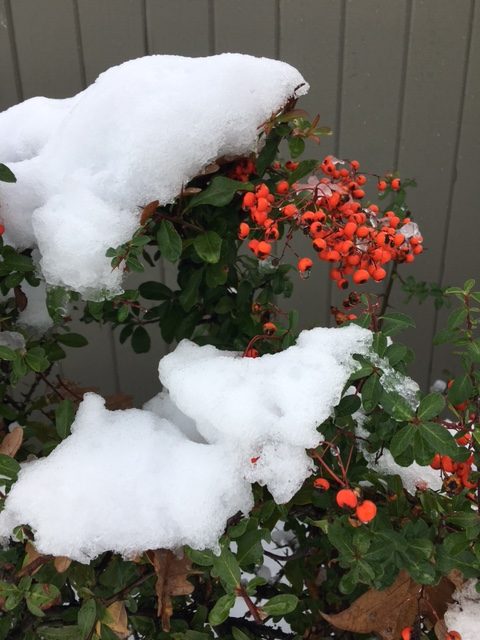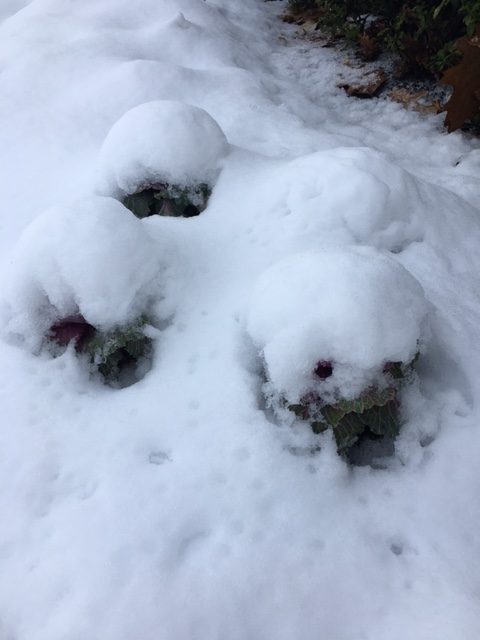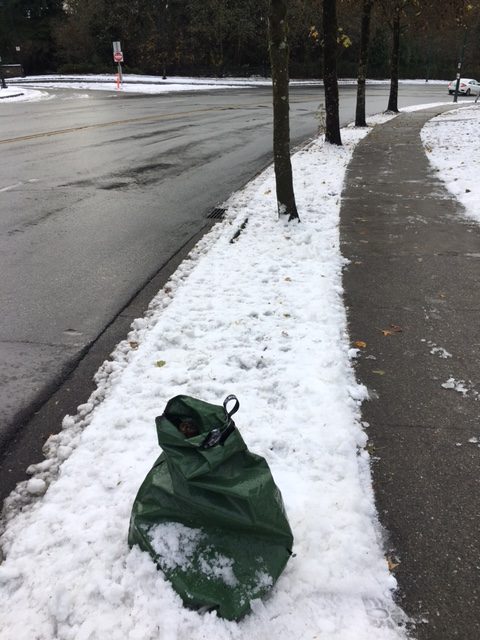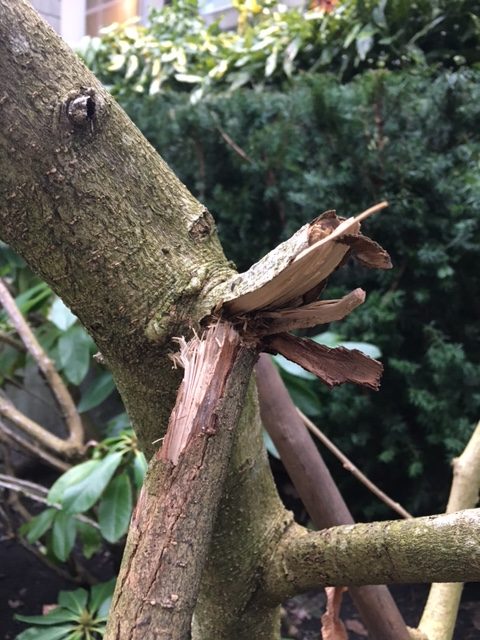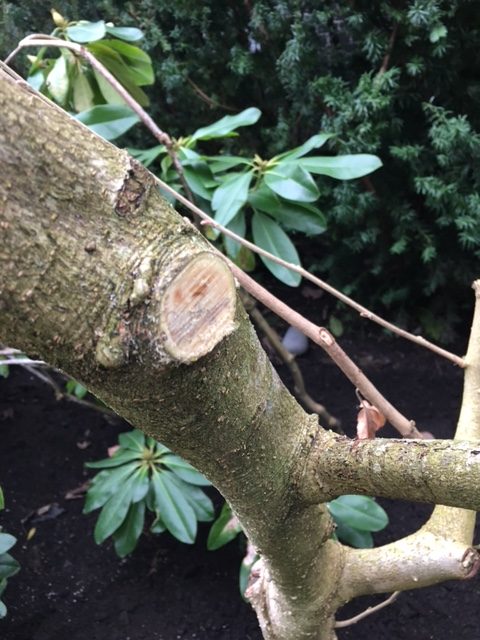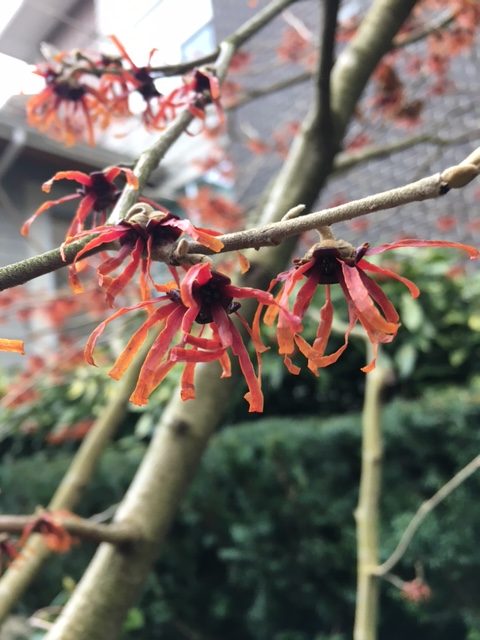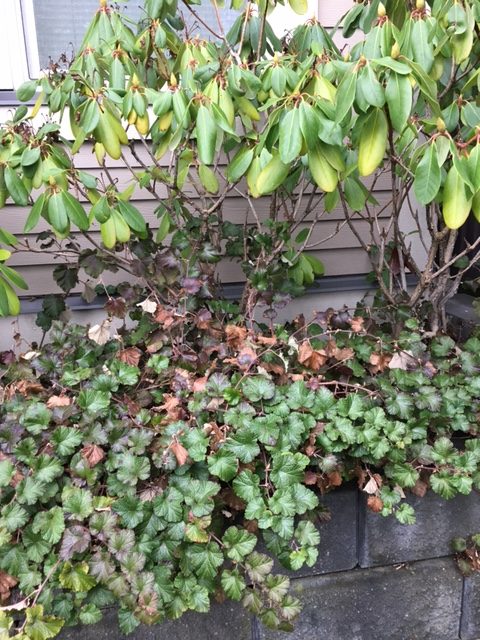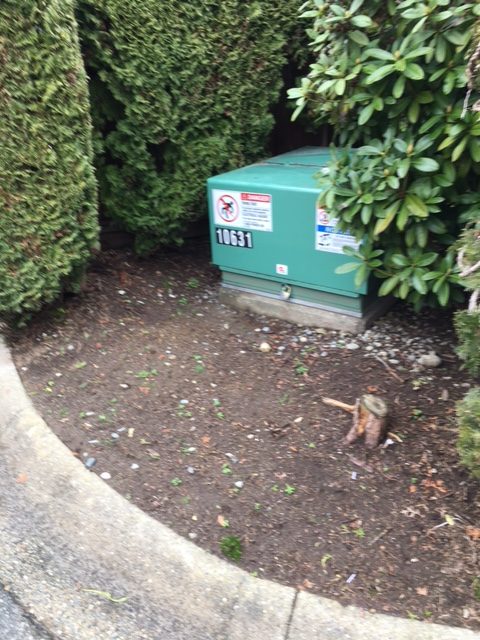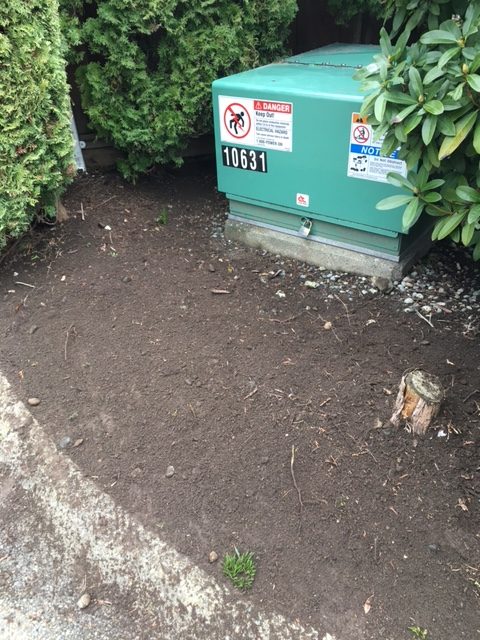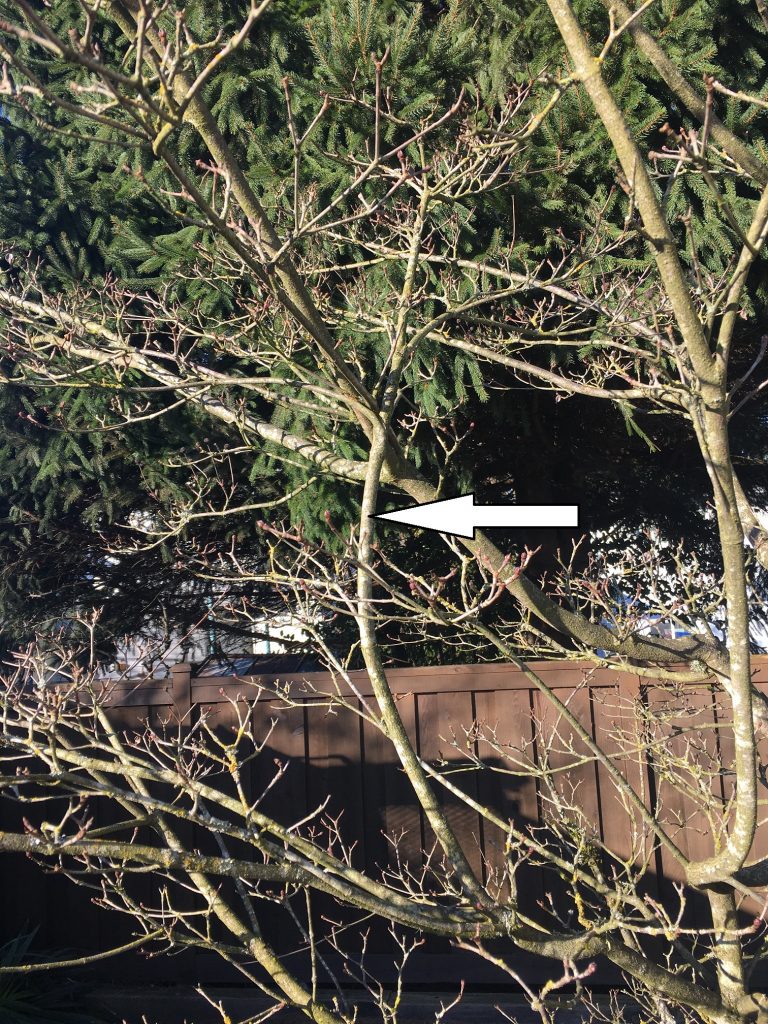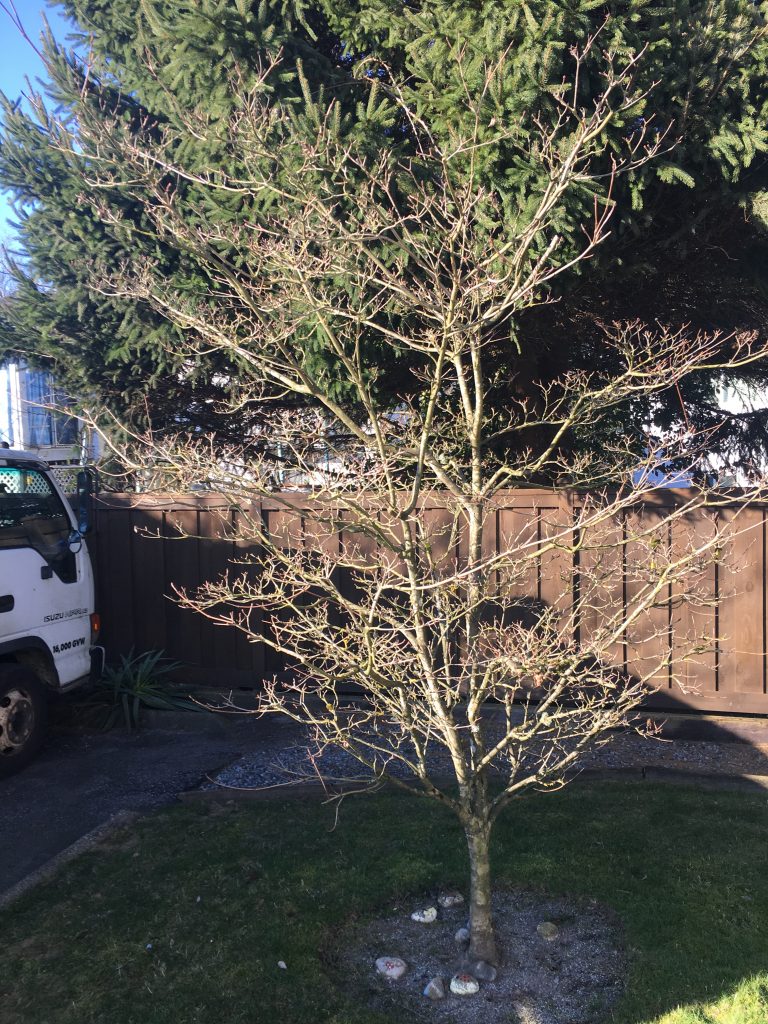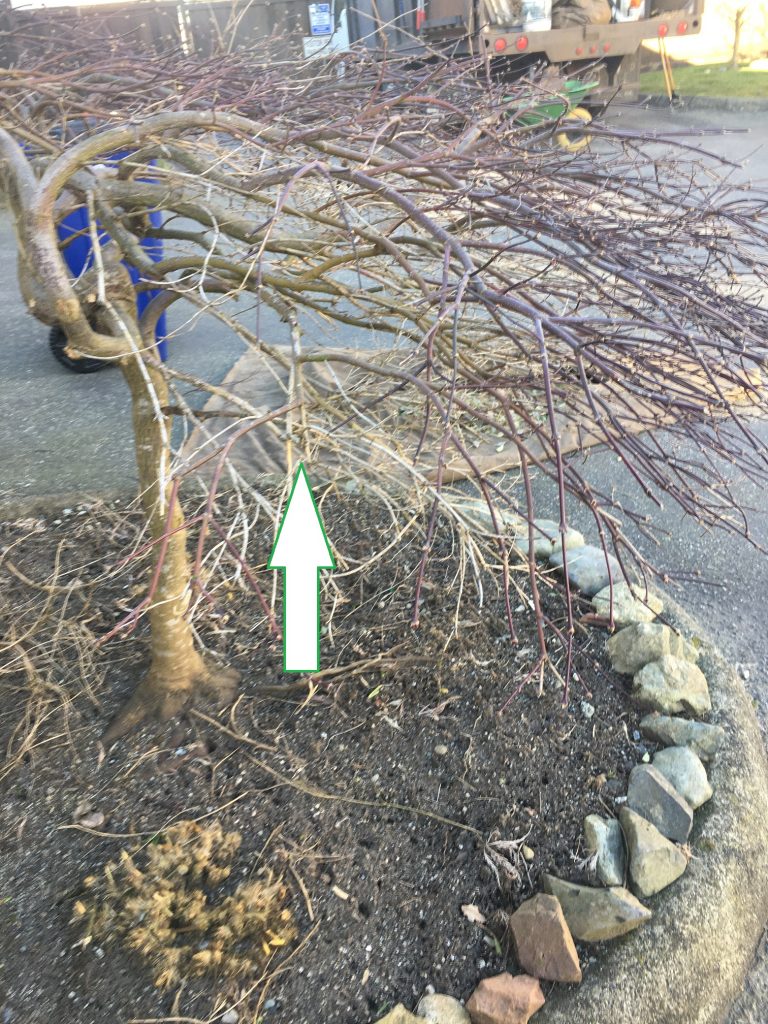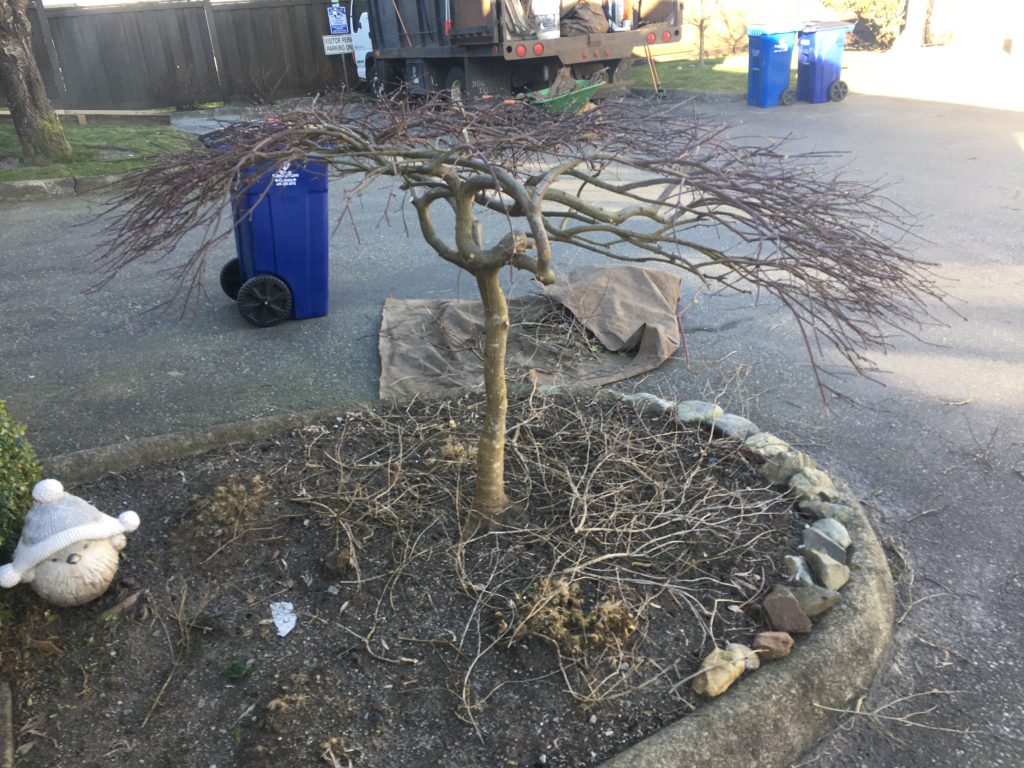Desperate for colour
Every winter I find myself longing for spring and for some colour in the garden. January seems to drag on and on. And today, with the first real cold and snow hitting the entire province, it was easy to notice the colour red. Let’s take a look.
Pyracantha

This prickly firethorn shrub (Pyracantha) is a great choice if you’re trying to keep pedophiles from your backyard. But I noticed it because it was full of birds helping themselves to berries. And those berries were more and more noticeable as light snow fell.
Look closely and you will notice the sharp thorns.
Berberis
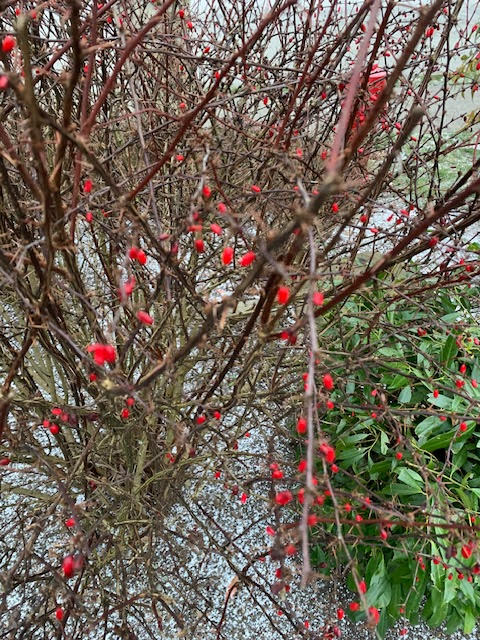
Berberis is also prickly but not as harsh as Pyracanthas. It has nice fall colours and when the leaves drop we really notice the red berries. Especially when the ground is covered with a bit of snow.
Cotoneaster
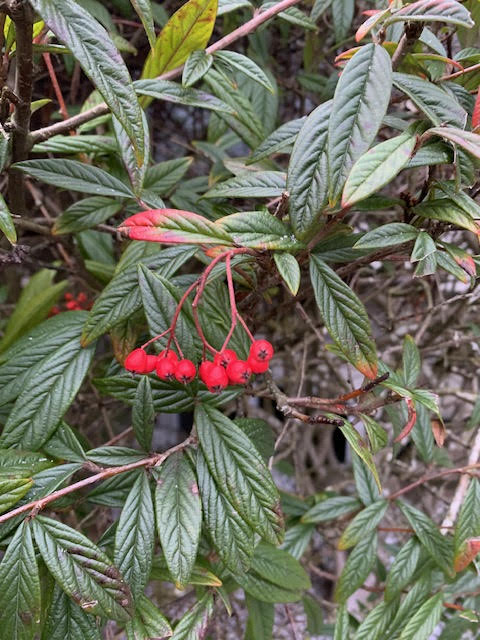
Cotoneasters are very popular shrubs. And like the Pyracantha, birds enjoy their fruits. Cotoneasters are cool because they have two kinds of shoots: long ones for structure and short one for flower clusters.
Nandina
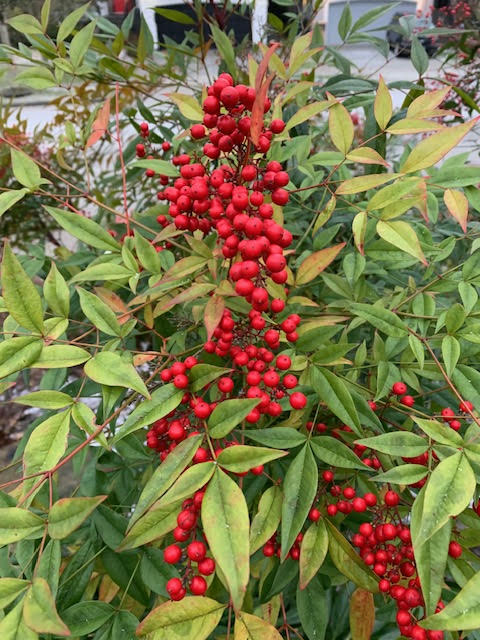
My eyes automatically shifted to Nandinas because of their red berries. Planted in a group, they made an island of red.
Red twig dogwoods

Red-twig dogwoods (Cornus sericea) have attractive red twigs and as snow fell they stood out even more. Just remember that it’s the new canes that look red. If you allow your shrub to mature, it will lose this red color except for the very top where new growth pushes out. See the picture below.
You can correct it by taking out the old wood. Don’t be shy.

Winter blues?
I’m trying to enjoy winters more, now that I’ve accepted that I can’t do anything about them. Today, for example, was a beautiful January day but with -13C temperatures I couldn’t really work outside. But the cold didn’t stop me from taking winter photos and video shorts for YouTube. Spring will come, I know. And until then, try to find some colour in your neighbourhood.










